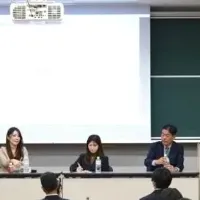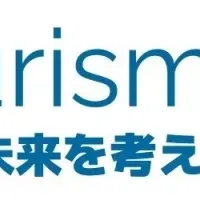
Huawei Digital Power Hosts Forum to Elevate ESS Safety and Business Strategies
On June 12, 2025, Huawei Digital Power organized a significant forum in Shanghai that addressed crucial safety concerns and innovative business strategies related to energy storage systems (ESS). The event gathered customers, partners, insurance firms, and certification organizations from the photovoltaic (PV) and ESS sectors, all coming together to share insights on industry trends and network technology developments. Notably, Huawei Digital Power launched the ESS Safety Initiative during this forum, aiming to enhance safety standards across the ESS industry.
The opening speech was delivered by Steven Zhou, the president of the smart photovoltaic and ESS product line at Huawei Digital Power. He emphasized that ESS plays a vital role in facilitating the integration of renewable energy sources, ensuring reliable grid operation while presenting both unprecedented challenges and opportunities. He elaborated that a network-forming ESS is pivotal for maintaining grid stability and has emerged as a leading technology in the sector. In line with this, Huawei introduced its latest FusionSolar 9.0 Smart PV+ESS solution, which incorporates network-forming capabilities across all scenarios, achieving comprehensive application.
Zhou outlined four essential safety standards necessary for sustaining grid stability: fire resistance, explosion proofing, non-propagation, and non-harmfulness. Furthermore, the system architecture between the cells and the grid significantly enhances reliability. Ongoing innovations and collaborations with customers, partners, and industry organizations were highlighted as essential steps to encourage the implementation of safety norms and the development of business model innovations, ensuring all stakeholders in the industry chain benefit from technological progress and work towards a sustainable future.
The forum also featured insights from Robert Liew, the Asia-Pacific research director at Wood Mackenzie, and Patrick Zank, the business development manager at VDE. They shared their perspectives on how network-forming technology could boost investments in renewable energy and emphasized the necessity for unified standards and market trust to foster broader application. Vannsith Ith, director of energy management at SchneiTec, and Billy Qiu, a smart energy technical manager at TÜV SÜD, detailed Cambodia’s first ESS project, where TÜV SÜD conducted empirical testing of Huawei's PV+ESS system in line with the PPP 58232 standard. These test results laid a robust foundation for building a stable, reliable smart grid and highlighted the development of network-forming projects in Southeast Asia.
Chen Danqing, Huawei Digital Power’s technical director, discussed the four primary technical challenges facing the widespread commercialization of network-forming technology, which include ensuring multi-device operational stability, dampening wide-band oscillations, strong overload support, and overall device safety and reliability. Given Huawei's extensive experience in PV and ESS, especially regarding grid-interactive and network-forming technologies, the company proposes a technological system integrating intelligent chains and network formation. This system focuses on network capabilities throughout the entire energy lifecycle, thereby redefining the essential standards necessary for such technologies. An ESS with network-forming capabilities must operate effectively under diverse network performance levels and conditions, delivering deterministic and stable support for energy systems while meeting the demands of various future business models. Huawei's ESS system has passed rigorous empirical testing in the cities of Qinghai and Xizang and has been implemented successfully in gigawatt-level projects.
Addressing the safety ecosystem for ESS growth, Chen Weipeng, the regional business president of the Munich Re Group, shared insights on securing ESS projects. Chen Xiong, general manager of services for electrical and electronic products at TÜV Rheinland China, reiterated that true system safety must encompass the entire ESS lifecycle. Meanwhile, Steve Zheng, president of the ESS network-forming division at Huawei Digital Power, pointed out that ESS typically possess high density, high voltage, and high current characteristics. Throughout their lifecycle, issues like electrochemical inconsistency, network uncertainties, and inadequate digital management capabilities can lead to significant safety risks.
To counter these challenges, Huawei Digital Power unveiled an innovative security system incorporating the "Panshi" battery block, layered chain architecture, and intelligent state diagnosis to maintain ESS safety throughout its lifecycle. The battery block is designed to serve as a minimum safety unit, utilizing a three-level insulation mechanism to prevent arcing, heat spread, and fire risks effectively. This architecture also successfully mitigates backflow, maintains stable active performance under high and low voltage drops, and facilitates rapid network recovery. An advanced digital management platform enhances safety oversight and control, capable of alerting users to faults up to seven days in advance, identifying over 30 types of issues, and providing continuous real-time monitoring.
Huawei Digital Power recently conducted extreme ignition tests of its smart chain ESS system with the international authority DNV, fully validating its safety resilience under extreme ignition scenarios. Moreover, the forum showcased pin penetration, water immersion, and thermal runaway tests conducted at the Huawei Dongguan comprehensive laboratory for network-forming ESS. The results effectively affirmed the system's safety adherences to four key safety standards: fire resistance, explosion proofing, non-propagation, and non-harmfulness, as well as three essential safety norms: grid friendliness, load compassion, and environmental stewardship. Huawei Digital Power aims to continue offering PV+ESS solutions while collaborating with the industry chain to ensure a sustainable and green future. The newly initiated ESS Safety Initiative seeks to enhance fire extinguishing specifications specifically for ESS, promote global standards uniformly, and continually elevate ESS safety levels while implementing visual and manageable safety capabilities across the entire lifecycle to protect the future of energy, establishing a secure safety foundation, and collectively advancing ESS safety to new heights.
The opening speech was delivered by Steven Zhou, the president of the smart photovoltaic and ESS product line at Huawei Digital Power. He emphasized that ESS plays a vital role in facilitating the integration of renewable energy sources, ensuring reliable grid operation while presenting both unprecedented challenges and opportunities. He elaborated that a network-forming ESS is pivotal for maintaining grid stability and has emerged as a leading technology in the sector. In line with this, Huawei introduced its latest FusionSolar 9.0 Smart PV+ESS solution, which incorporates network-forming capabilities across all scenarios, achieving comprehensive application.
Zhou outlined four essential safety standards necessary for sustaining grid stability: fire resistance, explosion proofing, non-propagation, and non-harmfulness. Furthermore, the system architecture between the cells and the grid significantly enhances reliability. Ongoing innovations and collaborations with customers, partners, and industry organizations were highlighted as essential steps to encourage the implementation of safety norms and the development of business model innovations, ensuring all stakeholders in the industry chain benefit from technological progress and work towards a sustainable future.
The forum also featured insights from Robert Liew, the Asia-Pacific research director at Wood Mackenzie, and Patrick Zank, the business development manager at VDE. They shared their perspectives on how network-forming technology could boost investments in renewable energy and emphasized the necessity for unified standards and market trust to foster broader application. Vannsith Ith, director of energy management at SchneiTec, and Billy Qiu, a smart energy technical manager at TÜV SÜD, detailed Cambodia’s first ESS project, where TÜV SÜD conducted empirical testing of Huawei's PV+ESS system in line with the PPP 58232 standard. These test results laid a robust foundation for building a stable, reliable smart grid and highlighted the development of network-forming projects in Southeast Asia.
Chen Danqing, Huawei Digital Power’s technical director, discussed the four primary technical challenges facing the widespread commercialization of network-forming technology, which include ensuring multi-device operational stability, dampening wide-band oscillations, strong overload support, and overall device safety and reliability. Given Huawei's extensive experience in PV and ESS, especially regarding grid-interactive and network-forming technologies, the company proposes a technological system integrating intelligent chains and network formation. This system focuses on network capabilities throughout the entire energy lifecycle, thereby redefining the essential standards necessary for such technologies. An ESS with network-forming capabilities must operate effectively under diverse network performance levels and conditions, delivering deterministic and stable support for energy systems while meeting the demands of various future business models. Huawei's ESS system has passed rigorous empirical testing in the cities of Qinghai and Xizang and has been implemented successfully in gigawatt-level projects.
Addressing the safety ecosystem for ESS growth, Chen Weipeng, the regional business president of the Munich Re Group, shared insights on securing ESS projects. Chen Xiong, general manager of services for electrical and electronic products at TÜV Rheinland China, reiterated that true system safety must encompass the entire ESS lifecycle. Meanwhile, Steve Zheng, president of the ESS network-forming division at Huawei Digital Power, pointed out that ESS typically possess high density, high voltage, and high current characteristics. Throughout their lifecycle, issues like electrochemical inconsistency, network uncertainties, and inadequate digital management capabilities can lead to significant safety risks.
To counter these challenges, Huawei Digital Power unveiled an innovative security system incorporating the "Panshi" battery block, layered chain architecture, and intelligent state diagnosis to maintain ESS safety throughout its lifecycle. The battery block is designed to serve as a minimum safety unit, utilizing a three-level insulation mechanism to prevent arcing, heat spread, and fire risks effectively. This architecture also successfully mitigates backflow, maintains stable active performance under high and low voltage drops, and facilitates rapid network recovery. An advanced digital management platform enhances safety oversight and control, capable of alerting users to faults up to seven days in advance, identifying over 30 types of issues, and providing continuous real-time monitoring.
Huawei Digital Power recently conducted extreme ignition tests of its smart chain ESS system with the international authority DNV, fully validating its safety resilience under extreme ignition scenarios. Moreover, the forum showcased pin penetration, water immersion, and thermal runaway tests conducted at the Huawei Dongguan comprehensive laboratory for network-forming ESS. The results effectively affirmed the system's safety adherences to four key safety standards: fire resistance, explosion proofing, non-propagation, and non-harmfulness, as well as three essential safety norms: grid friendliness, load compassion, and environmental stewardship. Huawei Digital Power aims to continue offering PV+ESS solutions while collaborating with the industry chain to ensure a sustainable and green future. The newly initiated ESS Safety Initiative seeks to enhance fire extinguishing specifications specifically for ESS, promote global standards uniformly, and continually elevate ESS safety levels while implementing visual and manageable safety capabilities across the entire lifecycle to protect the future of energy, establishing a secure safety foundation, and collectively advancing ESS safety to new heights.
Topics Other)










【About Using Articles】
You can freely use the title and article content by linking to the page where the article is posted.
※ Images cannot be used.
【About Links】
Links are free to use.